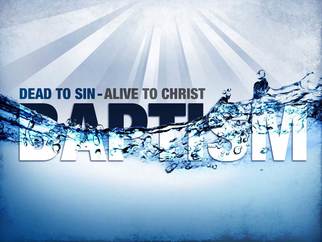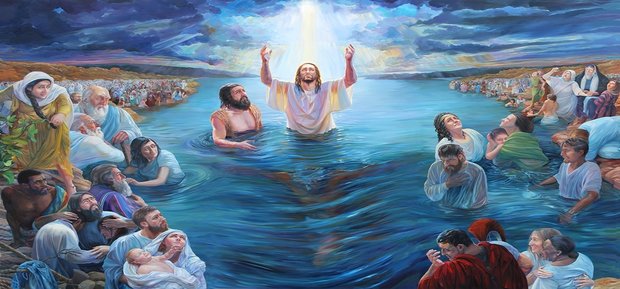Mobile Users: Our Multi-Media friendly articles are primarily created for desktop and tablets used in horizontal position only. Graphics and content order may display inaccurately thereby lessening the quality of your learning experience. Please feel free to utilize our PDF version on your mobile device HERE.
Article No. 3

Baptism is one of the earliest and most important Christian rituals. Its significance has been proven from its multiple mentions in the New Testament to the thousands of churches who still practice the ritual worldwide today. It is also one of the most hotly debated topics in Church history. Lots of ink (and blood) has been spilled over the topic of infant baptism. It was a big enough issue to cause multiple church split along with the need for religious freedom. Baptism might not be seen as such a critical issue during today’s American Christianity but it is nevertheless a tradition that has some deep-seeded history.

Did you know that the early Church used images of baptism in their funeral rites? Archaeologists have uncovered catacombs and sarcophagi with images of people being baptized painted on them. It wasn’t until later in church history that images of baptism were painted on ivory or mosaics. This lets us know that even though our New Testament texts portray baptism as an initiation ritual, early Christian imagery rather connects baptism with funeral rites. Both of these portrayals of baptism make sense considering that Paul talks about Christian Baptism as a believer dying and rising with Christ (Rom 6:3-4, Col 2:12). It works as an initiatory ritual because the new believer now crosses over from sin and death into new life with Jesus Christ. This also works as a funeral ritual considering that symbolically the believer is dying to this world, and then resurrecting in Christ.
|
John Calvin was a strong supporter of infant baptism. This is largely due to the fact that he connected Christian Baptism with the ancient Israelite ritual of circumcision. They were both marks of God’s chosen people. If circumcision was applied to children then baptism should be also, according to Calvin.
The synoptics gospels (Mark, Matthew, and Luke) are the only gospels that have the story of Jesus being baptized. John’s gospel actually keeps the story of Jesus’ baptism outside of it’s narrative.
In both Mark, Matthew, and Luke, Jesus is baptized at the Jordan river by John the Baptist. In the Gospel of John, the event actually never occurs and the author instead has John the Baptist recall a time when he saw a spirit descending upon Jesus, but never actually mentions anything about baptizing Him (John 3:29-34). Though we often consider baptism a full body immersion into water, most early images of Baptism in Christian history show the person being baptized having water poured on top of their head instead of being dipped in water. |
Though the New Testament tells us of Jesus’ baptism and the baptism performed by the apostles after Jesus’ ascension, it never actually shows Jesus baptizing anyone Himself. Jesus Himself is baptized by John the Baptist (Mark 1:9-11, Matt 3:13-17, Luke 3:21-22), the apostles are told by Jesus to baptize the nations (Matt 28:19), but Jesus never baptized any of His own followers. This has puzzled scholars for years now. There have been multiple theories as to why this is the case. Some suggest that since Jesus had not yet died and resurrected, there could be no baptism. This solves the issue for later Christian baptism but it doesn’t answer the question of why Jesus was then baptized by John the Baptist. If baptism held no ritual importance yet, why was Jesus baptized in the first place? Some have then answered this question by showing how John’s baptism in the wilderness and early Christian baptism have very different purposes. Others suspect that since Jesus was with His followers, there was no need for them to be baptized into His life, He was currently walking among them. Every interpretation has its answers but it is an intriguing question nevertheless.








